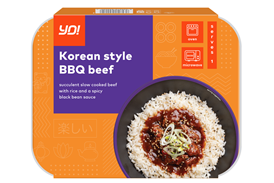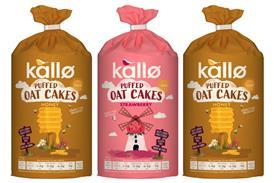As the empire thrived, Britain was becoming more technologically connected. The London-Paris telephone system became operational in 1891. In 1894, the Manchester Ship Canal opened - and in 1899, Guglielmo Marconi transmitted a radio signal over the English channel.
Closer to home, electric lighting began to appear in homes and the first electric taxis took to London’s streets in 1897. Engineering, too, was making great leaps forwards, reflected in the opening of the Forth Bridge - at 521m, the longest in Britain - in 1890.
Talking of Scotland, the 1890s was a fruitful period for Scottish brands. Names such as Tunnock’s (1890), Lipton (1893), The Famous Grouse (1897), Walkers Shortbread (1898) and Grant’s Family Reserve (1898) debuted during the decade. South of the border, store cupboard staples including Cerebos Salt (1894)and Batchelors (1895) were born, while Robin Starch (1899) helped make laundry duties easier, if not more enjoyable.
As the first ad agencies professionalised the art of promotion, colour printing technology was coming on leaps and bounds -and manufacturers enthusiastically made use of it both for packaging and advertising their wares. On posters and, to a lesser extent, magazines and newspapers, elaborate and colourful illustrations were commissioned - or repurposed.
At soap manufacturer A&F Pears, chairman Thomas Barrett bought the copyright for works of art to use in advertising (not always with the artist’s approval - Millais objected to the soap bar added to the foreground of his painting ‘Bubbles’). “The advertiser has allied himself to art,” wrote US magazine Overland Monthly in 1896. “He has called to his aid the poetry of allegory.”
And, sometimes, the poetry of exaggeration. Suppliers could no longer adulterate their food and drink, but they could supplement the truth. Hovis was good for ‘digestion’. Barrett’s stout was proclaimed ‘nourishing’ and ‘for invalids’ - “it saved my life,” announced the poster girl. Horlicks was for ‘infants, invalids, the aged and travellers’.
And albeit accurate in a strictly physiological sense, Cerebos Salt could never get away today with its claim to ‘form the substance of bone, brain and nerve’.
History of Brands
- 1
- 2
- 3
- 4
- 5Currently reading
History of brands: the 1890s
- 6
- 7
- 8
- 9
- 10
- 11
- 12
- 13
- 14
- 15














No comments yet